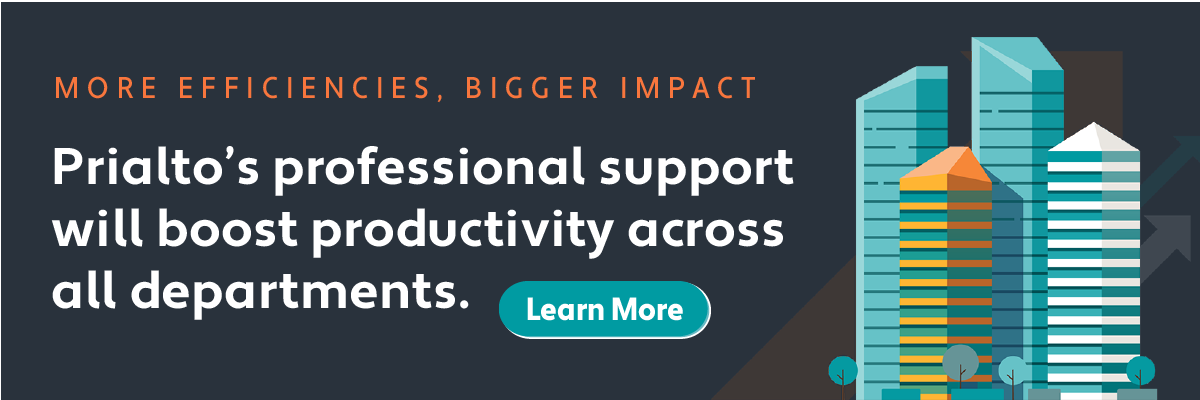If your customer relationship management (CRM) software has turned into an expensive phone book that is rarely used, you're not alone. Up to 70 percent of CRM implementations fail.
It doesn't have to be this way.
To get motivated to revive your contact management, let's go through a reminder of what your CRM can do for you if you clean it up.
Customer Tracking
In an ideal world, the CRM is a "single source of truth" for every interaction with your contacts, from the time your first meet as a lead, to conversion to a customer, to a delighted fan that sends more business your way. At any time, you can see every interaction, including:
- Emails
- Phone calls
- Instant messages
- Online or in-person meetings
- Outcomes and next steps
Improved Customer Communication
The purpose of CRM is relationship management. Having visibility in the communications with your customers as listed above enables you and your sales team to be proactive and more responsive to your contacts. You can use the CRM to:
- Enter follow up steps in a calendar
- Set reminders to execute follow up steps
- Generate to-do lists
- Set alerts for reminders
The CRM helps you avoid the embarrassment of forgetting the next steps. For teams, it prevents miscommunication, like inviting someone to a demo when they've already been through a demo with someone else.
Forecasting
You can develop a system for ranking customers in terms of their sales potential. For example, you can track information like:
- Degree of certainty of a sale
- Timing of a decision
- Size of the deal
This information gives you excellent visibility into your sales pipeline and makes revenue projections far more accurate. Accurate revenue forecasts enable accurate budgeting and a faster path to profits.
Improved Marketing
Another essential piece of data you can track in your CRM is the lead source. Knowing where your best leads come from helps you sharpen your marketing spend. For example, if a particular event, email campaign, or website offer is converting more leads into customers than other programs, you can invest more there. And you can cut back on efforts that aren't generating quality leads. Without this data, you could be misspending your marketing dollars.
Automated Workflows
You can use a CRM to automate much of your communication with contacts with workflows. Examples of CRM workflows include:
- Lead nurturing—sending offers and invitations to move leads to take the next step
- Invoicing—generating and sending invoices
- Payment reminders—reminders of payment due before and after deadlines
- Goal tracking—get notifications when reaching (or not) goal milestones
Automating routine processes is one of the biggest values of a CRM. You spend less time on administrative tasks and more time running the business. Invoicing and payment reminders can also help you get paid faster.
Delight Customers
The value of CRM doesn't end when you close a deal. In addition to pre-sales activity, you can automate post-sales activities. You use the CRM to notify customers when:
- Service is needed
- New products or features are available
- Bug fixes or updates are needed
- Special offers are available
You know that you can never take customer loyalty for granted. Proactive post-sale communication is just as important as the marketing and sales processes.
Training and Adoption
Lack of training and poor user adoption are the two biggest reasons that CRM implementations fail. Makes sense. If you and your team aren't properly trained on the platform, you won't use it. When you don't use the CRM, the data in it isn't up to date and is not a reliable source of information about your prospects and customers' status. Examples of unreliable data include:
- Duplicate contacts—you don't know which is correct
- Wrong contact information: Mis-typed or missing email addresses, zip codes, titles, etc.
- Lack of follow up—no notes about "touches" the contact has had with your business
The first step in getting your CRM back on track is to clean up the data. The easiest way to do this is by exporting the database to a spreadsheet and filling in the gaps. It's a slow, manual process. Another way to clean your data and keep it clean is to outsource data entry and maintenance to an assistant. Increasingly companies are turning to virtual assistant services for cost-effective CRM management and maintenance.
Powerful Benefits
Good data is the heart of most businesses and sales organizations. The CRM is the tool of choice to collect, store, and use customer and prospect data. When the CRM works, the results are powerful.
The benefits of a well-implemented CRM for businesses include:
- Customers spend 20-40 percent more with companies that use a CRM.
- Companies that use CRMs increase retention and customer satisfaction by 47 percent.
- Conversion rates rise by up to 300 percent for CRM users.
- The average ROI for a CRM is $8.71 for every dollar spent on the platform.
- Improving your team's sales productivity.
This is what you're missing!
Related: How to Efficiently Manage Action Items in Your CRM
For more information on how to re-harness the power of your CRM, download the ebook, "How to Get Your CRM Back on Track." It's a guide to fixing your CRM and empowering you to get all the benefits it has to offer.

